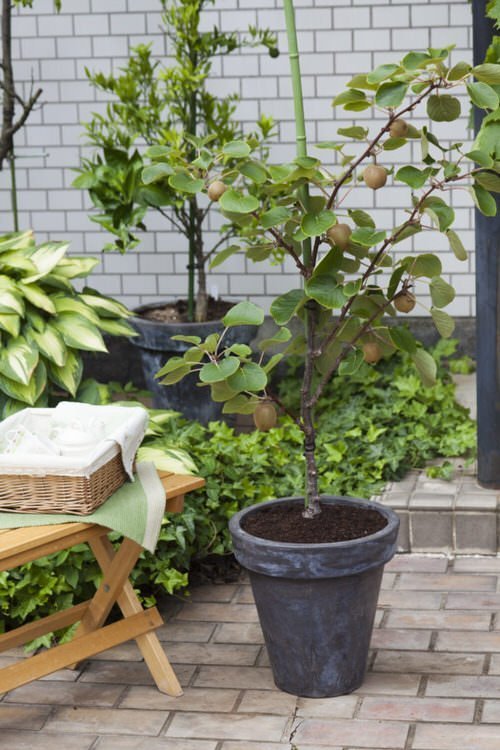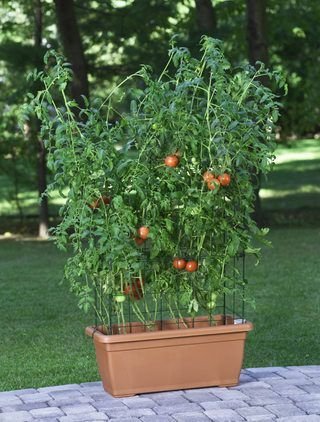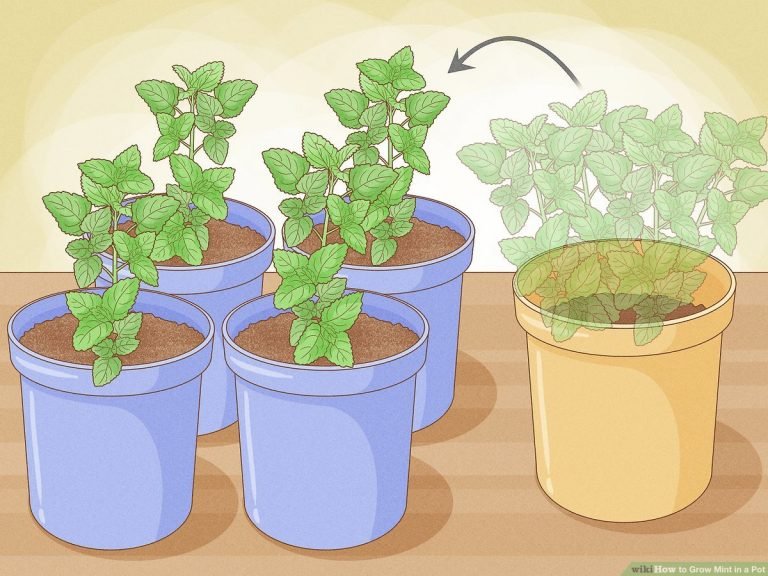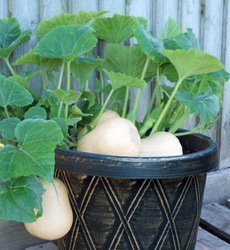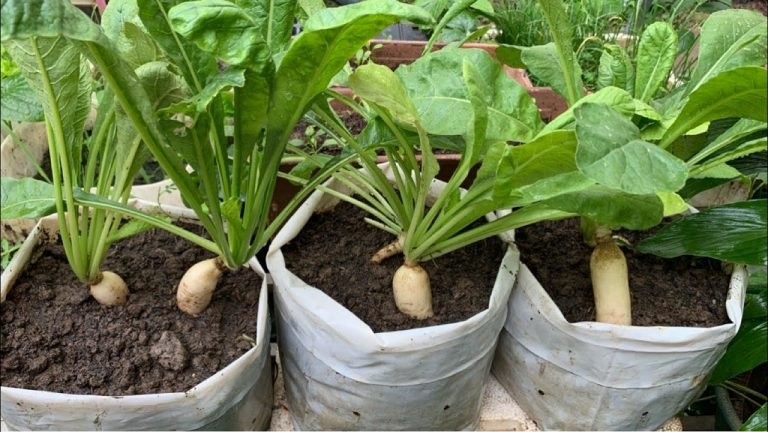how to grow pineapple in a pot – [Beginners Guide]
Have you ever thought about growing your own pineapple at home? You might think that pineapples can only be grown in tropical regions, but with the right conditions, you can actually grow this tropical fruit in a pot right in your own backyard.
Growing pineapples in pots has become increasingly popular among home gardeners for many reasons. Firstly, it allows you to have control over the growing conditions, which can be particularly important if you live in an area with unpredictable weather. Secondly, growing pineapples in pots can be a great space-saving solution for those who don’t have a lot of garden space. And lastly, there’s nothing quite like the satisfaction of growing your own juicy and delicious pineapple.
As someone who has successfully grown pineapples in pots, I can tell you that it’s not as difficult as you might think. In fact, it’s quite easy once you have the right information and materials. In this guide, we’ll go over everything you need to know about how to grow pineapple in a pot, from selecting the right pot and soil to planting and caring for your pineapple plant.
So, whether you’re a seasoned gardener or just starting out, let’s explore how to grow your own pineapple in a pot and enjoy the sweet taste of success!
Pot or container selection
When it comes to growing pineapples in pots, selecting the right pot is just as important for the success of your plants. Pineapples are relatively large plants with extensive root systems, so they need plenty of space to grow. Here’s what you need to consider when selecting a pot for your pineapple plant:
Size and Capacity
The pot size and capacity for growing pineapples is a bit different than what’s required for cherry tomatoes. Pineapple plants can grow quite large, so you’ll need a pot that’s at least 16-20 inches (40-50 cm) in diameter and 16-20 inches (40-50 cm) deep. This will give the plant enough room to grow and thrive. Keep in mind that pineapples can take up to two years to mature and produce fruit, so it’s important to choose a pot that will accommodate the plant’s growth for an extended period.
Construction
The construction of your pot is also important for the health and growth of your pineapple plant. Here are some things to consider:
- Material: Choose a pot that’s made of a durable material like ceramic, plastic, or fiberglass. These materials will hold up well over time and won’t leach harmful chemicals into the soil. Avoid pots made of metal or wood, as they can corrode or rot and negatively affect the health of your plant.
- Drainage: It’s essential that your pot has good drainage to prevent water from accumulating in the soil and causing root rot. Look for a pot with drainage holes in the bottom, or drill some yourself if needed. You can also add a layer of gravel or rocks to the bottom of the pot to help with drainage.
- Style: You can choose a pot that’s decorative or utilitarian, depending on your preference. However, make sure the pot is functional and meets the size and construction requirements for growing pineapples.
In summary, when it comes to growing pineapples in pots, size and construction are critical factors to consider. Choose a pot that’s large enough to accommodate the plant’s growth, made of a durable material with good drainage, and is well-suited for growing pineapples. With the right pot and care, you can enjoy the sweet taste of homegrown pineapple right from your own backyard.
Make suitable soil mix
When it comes to growing pineapple at home, choosing the right soil mix is also crucial for the success of your plants. Pineapple plants prefer well-draining soil with a slightly acidic pH level. Here are some things to consider when selecting soil for your pineapple plants:
Type
It’s best to use a potting mix that is specifically formulated for tropical plants or fruits. These mixes are usually made from a combination of peat moss, perlite or vermiculite, and coconut coir, and are designed to provide good drainage while retaining moisture. Avoid using garden soil or topsoil, as these types of soil may not have the right composition for container-grown plants and can cause drainage problems or root rot.
Mixture
In addition to using a high-quality potting mix, you may also want to consider adding some amendments to your soil to give your pineapple plants a boost. Some options include:
- Compost: Adding compost to your soil can help improve its structure, drainage, and nutrient content.
- Organic fertilizers: You can use organic fertilizers, such as fish emulsion or seaweed extract, to provide additional nutrients for your plants.
- Perlite: Adding perlite to your soil mix can improve drainage and aeration, preventing soil compaction and root rot.
- Coconut coir: Adding coconut coir to your soil mix can help retain moisture, which is important for pineapple plants, while also improving soil structure and drainage.
By choosing the right soil mix and adding the right amendments, you can provide your pineapple plants with the optimal growing environment and increase the likelihood of a successful harvest.
How to plant the pineapple?
Here is a step-by-step guide on how to plant pineapple in a pot at home:
Step 1: Choose a suitable pot
Choose a pot that is at least 8-10 inches deep and wide enough to accommodate the root system of the pineapple plant. Make sure the pot has drainage holes to allow excess water to drain away from the roots.
Step 2: Prepare the soil mixture
Pineapples prefer well-draining soil that is slightly acidic with a pH level between 4.5 and 6.5. You can create a suitable soil mixture by combining equal parts of peat moss, perlite, and a good quality potting mix.
Step 3: Add soil mixture to the pot
Fill the pot with the soil mixture, leaving about an inch of space at the top for watering.
Step 4: Prepare the pineapple top
Twist off the leafy top of a fresh pineapple fruit, making sure to remove any fruit flesh still attached to the base. Peel off the bottom few layers of leaves to reveal the stem.
Step 5: Plant the pineapple top
Create a small hole in the center of the pot and insert the pineapple top, making sure that the stem is completely buried in the soil. Firmly press the soil around the base of the pineapple top to ensure that it is secure in the pot.
Step 6: Water the plant
Water the plant thoroughly, making sure that the soil is moist but not waterlogged. After watering, allow the soil to drain completely.
Step 7: Place the pot in a suitable location
Place the pot in a warm, sunny location with good air circulation. Pineapples need at least 6-8 hours of sunlight per day, so a south-facing window or balcony that receives direct sunlight is ideal.
Step 8: Water and fertilize the plant regularly
Water the plant deeply once a week, allowing the soil to dry out slightly between waterings. Fertilize the plant once a month with a balanced, slow-release fertilizer that is high in potassium.
Step 9: Harvest the pineapple
It takes about 18-24 months for a pineapple plant to produce fruit. Once the fruit appears, it will take another 6-8 months to ripen. When the pineapple turns yellow and has a sweet fragrance, it is ready to harvest.
With proper care, your pineapple plant will produce a sweet and delicious fruit that you can enjoy at home!
How to care for pineapple?
Caring for Pineapple in a Pot at Home
Growing pineapple in a pot at home is a fun and rewarding experience. With the right care, you can enjoy delicious, sweet pineapples right from your own backyard. Here are some tips for caring for pineapple in a pot at home:
Watering Requirement
Pineapple plants prefer well-draining soil and need to be watered regularly. Water the plant deeply once a week or when the top inch of soil feels dry. Overwatering can lead to root rot, so be sure not to water the plant too frequently. Pineapple plants are also sensitive to salt, so avoid using hard water or water that has been treated with softeners or chemicals.
Fertilizer Requirement
Pineapple plants need a balanced fertilizer with equal amounts of nitrogen, phosphorus, and potassium. Use a slow-release fertilizer that contains micronutrients, such as magnesium and iron. Apply the fertilizer every three months during the growing season. Be sure not to over-fertilize, as this can lead to leaf burn and stunted growth.
Sunlight Needs
Pineapple plants need plenty of sunlight to grow and produce fruit. They require at least 6 hours of direct sunlight per day. If you are growing the plant indoors, place it near a south-facing window or use a grow light to provide sufficient light.
Pruning & Training
Pineapple plants do not require much pruning, but you can remove any damaged or dead leaves to keep the plant healthy. Pineapples grow from the center of the plant, so be sure not to damage the center when pruning. Once the pineapple has matured, cut it off at the base of the fruit and leave the remaining foliage intact. The plant will produce new growth and may produce additional fruit.
Other Care
In addition to watering, fertilizing, and pruning, there are a few other things you can do to care for your pineapple plant:
- Use a well-draining potting mix that contains perlite or vermiculite to improve drainage.
- Protect the plant from extreme heat or cold, as this can damage the leaves and fruit.
- Provide good air circulation around the plant to prevent fungal diseases.
- Watch out for pests such as mealybugs, scale insects, and spider mites. Use insecticidal soap or neem oil to control infestations.
By following these care tips, you can enjoy a healthy, productive pineapple plant in a pot at home. With a little patience and attention, you can grow your own sweet, juicy pineapples right in your backyard
Common problems
Other Issues
In addition to the common problems mentioned above, there are other issues that can affect pineapple plants grown in pots. These include:
Root Bound
Pineapple plants can quickly outgrow their pots, which can lead to root binding. When the roots become overcrowded, they can become tangled and start to strangle each other, which can lead to poor growth and yield. To prevent this, it’s important to repot your pineapple plant into a larger pot every year or so.
Overwatering/Underwatering
Overwatering or underwatering can cause problems for pineapple plants. Overwatering can lead to root rot, which can kill the plant, while underwatering can cause the leaves to turn yellow and dry out. To prevent these issues, it’s important to water your pineapple plant regularly but not too often. Make sure the soil is moist but not soaking wet, and allow the top inch of soil to dry out before watering again.
Temperature
Pineapple plants are tropical plants and require warm temperatures to thrive. They can be sensitive to cold temperatures and frost, which can cause damage to the leaves and fruit. It’s important to keep your pineapple plant in a warm, sunny location and protect it from cold drafts.
Humidity
Pineapple plants prefer high humidity, which can be difficult to achieve in a dry indoor environment. You can increase humidity around your pineapple plant by placing a tray of water nearby or misting the leaves with water regularly.
Fertilizer
Pineapple plants require regular fertilization to produce healthy fruit. Use a balanced fertilizer every two weeks during the growing season, according to the package instructions. Overfertilizing can lead to excessive foliage growth at the expense of fruit production, so it’s important to follow the instructions carefully.
Harvesting & storing homegrown pineapple
Harvesting and storing homegrown pineapple requires attention to timing and proper handling to ensure the fruit stays fresh and ripe. Here are some tips for harvesting and storing pineapple:
When to Harvest Pineapple
Pineapples take about 18-24 months to reach maturity and fruiting, so it requires patience and dedication to grow them at home. Pineapples will produce a large, central fruit with smaller fruits, called suckers, around the base of the plant. The central fruit should be allowed to mature and ripen before harvesting. You can tell when a pineapple is ripe by checking the color and smell of the fruit. A ripe pineapple will have a golden yellow color and a strong, sweet aroma. The leaves on top of the pineapple will also be easily pulled out with a gentle tug. If the leaves are still firmly attached, the fruit is not yet ripe.
How to Harvest Pineapple
When the pineapple is ripe, cut the fruit off the stem using a sharp knife. It’s important to cut the fruit cleanly to avoid damaging the stem and the remaining plant. Be careful not to cut too close to the fruit, as this can leave behind pieces of the stem that can cause rotting or other problems.
Storing Pineapple
After harvesting, store the pineapple in a cool, dry place for a few days to allow the fruit to fully ripen and develop its flavor. Once the pineapple is ripe, it can be stored in the refrigerator for up to five days. It’s important to store the fruit in an airtight container or plastic wrap to prevent it from drying out or absorbing moisture, which can cause spoilage.
If you have an abundance of pineapples, you can also freeze the fruit for later use. To freeze pineapple, cut the fruit into chunks or slices, then arrange them on a baking sheet and freeze until solid. Transfer the frozen pineapple to a resealable plastic bag or container and store in the freezer for up to six months.
In summary, harvesting and storing homegrown pineapple requires patience, attention to detail, and proper handling. Wait until the fruit is ripe before harvesting, cut it off the stem cleanly, and store it in a cool, dry place or the refrigerator. If you have an excess of pineapple, freezing the fruit is also an option.
Growing pineapple in container – Conclusion
Congratulations on learning how to grow pineapple in a pot! You should now have a good understanding of the ideal growing conditions, planting process, and care requirements for pineapple plants in pots.
Growing your own pineapple at home can be a fun and rewarding experience, and can provide you with fresh and delicious fruit. Whether you live in a tropical climate or not, with the right pot, soil mix, and care, you can enjoy the sweet taste of homegrown pineapple.
So why not give it a try? Follow the steps outlined in this guide and enjoy the benefits of growing your own pineapple. Nothing beats the satisfaction of seeing your hard work pay off with a harvest of fresh, juicy pineapple. Happy growing!



